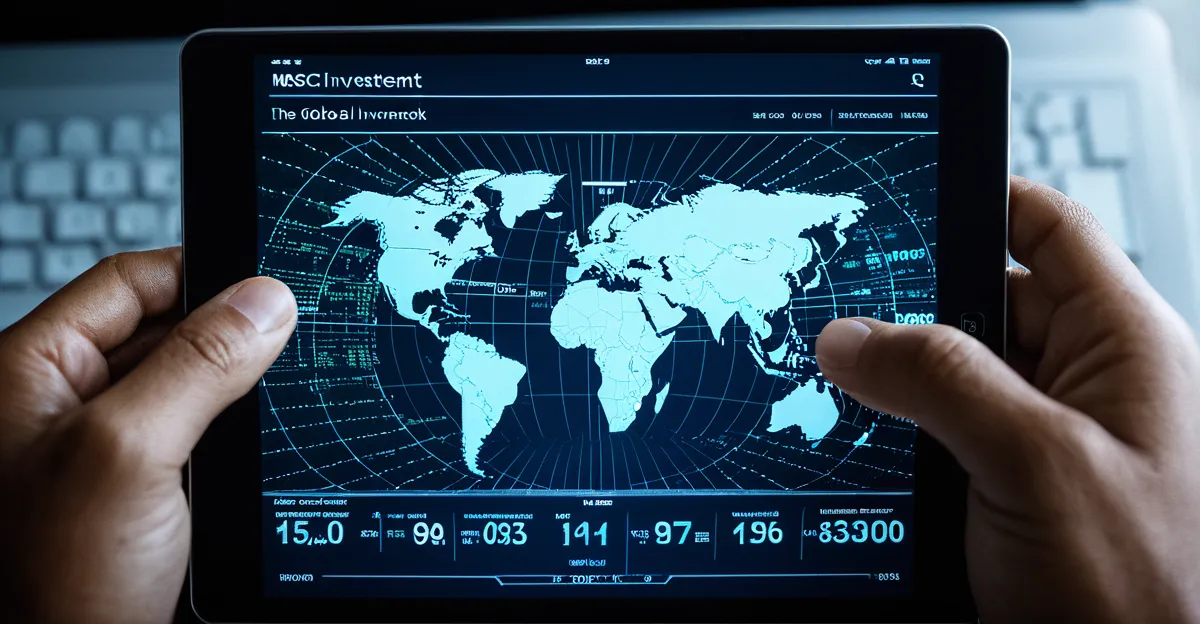Understanding the MSCI World Index opens the door to diversified global investing. This index tracks thousands of companies across developed markets, offering a broad snapshot of international equity performance. Knowing its structure and role helps investors assess opportunities and risks with clarity and confidence.
Key Facts and Relevance of the MSCI World Index for Global Investors
The MSCI World Index stands as a leading global equity benchmark, integrating the performance of over 1,500 large and mid-cap companies across 23 developed nations—MSCI World Index avec Easyvest provides a straightforward gateway to understanding this landscape. Representing sectors like technology, healthcare, and consumer goods, the index is market capitalization-weighted, ensuring larger companies have greater influence on overall results. It effectively covers approximately 85% of the free float-adjusted market capitalization in each constituent country, making it a versatile tool for comparative analysis and performance benchmarking among major global market indices.
Also read : Understanding the msci world index: a guide to global investments
At its core, the index supports international stock diversification, offering investors exposure to a broad selection of established multinational firms. Exchange-traded funds (ETFs) and index funds linked to the index have become preferred vehicles for passive investing, thanks to their cost efficiency and transparency. The MSCI World Index also integrates ESG metrics—tracking environmental impact, social responsibility, and governance standards—which helps investors assess sustainability risks and opportunities in their portfolios. Regular quarterly reviews and semi-annual rebalancing maintain the accuracy and relevance of the index, supporting diverse strategies for portfolio diversification and long-term financial growth.
Composition, Methodology, and Sector Allocation in the MSCI World Index
Market Capitalization Weighting and Methodology
The MSCI World Index applies market capitalization weighting—specifically, a free float-adjusted approach—so only shares readily available for trading are counted. This means larger companies, such as major players in technology or financials, strongly influence the movement of global equity benchmarks. The index rebalancing process occurs semi-annually, with quarterly reviews ensuring accuracy and alignment with current market conditions. Changes in the universe of large and mid-cap stocks are reflected, maintaining robust global sector diversification and minimizing tracking error in index fund tracking.
In parallel : Explore the best uk destinations for retirement community investments: your comprehensive real estate opportunity guide
Sector and Country Breakdown
Sector allocation in global indices shapes exposure to economic trends. The MSCI World Index offers balanced allocations to technology, healthcare, financial, and consumer goods companies, reflecting the sector performance drivers across developed markets. The US stock market weight dominates, but regional exposure differences ensure representation from Europe and Asia-Pacific, strengthening portfolio diversification benefits. The top constituents in global equity benchmarks are typically multinational firms leading their sectors, supporting global market performance and broad-based global investing.
Inclusion and Exclusion Criteria
Stock selection criteria for global indices focus on developed market exposure by excluding small cap and emerging market stocks. This approach emphasizes index construction stability and lowers country-specific risks in global funds. However, emerging market exclusion can limit upside during high global growth cycles, while the index rebalancing process ensures sector and regional allocations adapt over time, supporting historical returns of world stock indices and passive investing with world indices.
Performance, Risk Considerations, and ESG Factors in the MSCI World Index
Historical Performance and Volatility Trends
Measured over decades, the MSCI World Index reflects global stock index trends that track more than 1,500 large and mid-cap stocks across 23 developed markets. Its returns historically align with key global economic indicators impact—during economic downturns, the index typically experiences higher drawdowns, yet benefits from robust recoveries as markets stabilize. The risk and volatility in world stock indices for the MSCI World Index closely follow global market cycles, providing useful benchmarking for passive investing with world indices. Compared to similar global equity benchmarks, its volatility remains moderate due to broad sector and international stock diversification.
Main Investment Risks
A substantial US stock market weight—often exceeding 65%—leads to concentration risk within the MSCI World Index. This influences the performance comparison of global indices, especially in cycles where US equities outperform or lag. The focus on developed markets means emerging market exclusion, which can limit growth potential. Exposure to currency fluctuations presents another layer of risk for investors outside the base currency, impacting global index returns during economic downturns and affecting portfolio diversification benefits.
ESG and Sustainability Metrics
ESG considerations in global indices are integral to the MSCI World Index. It monitors policy risks, climate Value-at-Risk, board diversity ratios, and carbon intensity, thus supporting sustainable investing in global equity benchmarks. MSCI ESG Research provides regular updates, ensuring that social governance factors and metrics reflect the ongoing evolution of the global equity landscape.



